Saint Kitts and Nevis Flag Meaning
A diagonal black band edged in yellow divides the flag from lower hoist to upper fly, with green above and red below. Two white stars appear in the black band, representing hope and liberty.
- Continent
- North America
- Adopted
- 1983
- Ratio
- 2:3
- Colors
- green, yellow, black, red, white
- Designer
- Edris Lewis
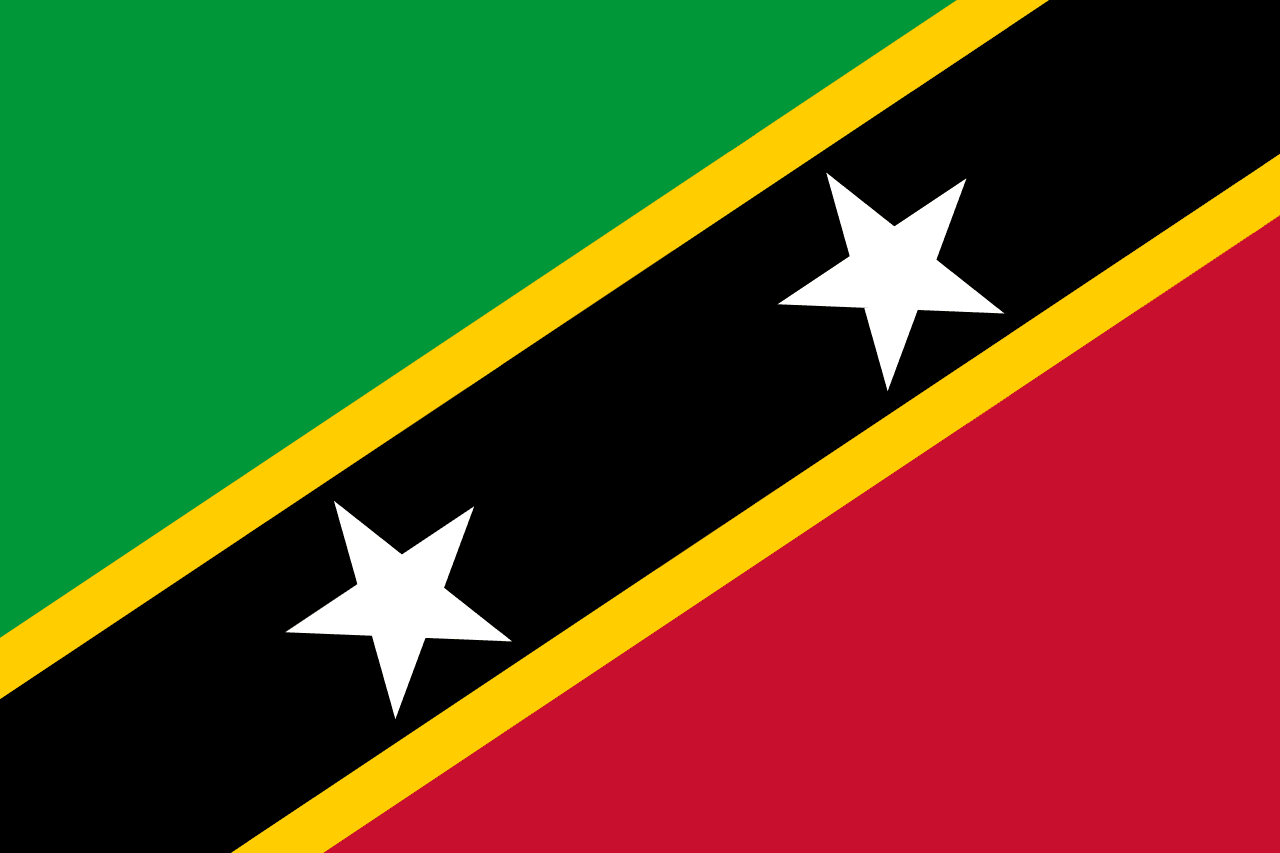
Symbolism
Green Triangle: Represents the fertile land and agriculture.
Red Triangle: Symbolizes the struggle and sacrifices of the people for freedom.
Black Band: Represents the African heritage of the nation’s people.
Yellow Edges: Symbolize year-round sunshine.
Two White Stars: Stand for hope and liberty, and also symbolize the two islands of the federation.
History
- Pre-Colonial Era: Originally inhabited by the Kalinago people before European colonization.
- 1623: English settlement began on Saint Kitts, the first British colony in the Caribbean.
- 18th Century: Sugar plantations made the islands wealthy, relying heavily on enslaved African labor.
- 1967: Gained associated statehood with Britain.
- September 19, 1983: Gained full independence and adopted the current flag.
Trivia
- Known as 'The Mother Colony of the West Indies,' Saint Kitts was the site of Britain’s first Caribbean colony.
- The federation consists of two islands: Saint Kitts and Nevis, the smallest sovereign state in the Western Hemisphere by area and population.
- The economy was once dominated by sugar, but now relies on tourism and offshore banking.
- The two stars symbolize not only the islands but also the ideals of liberty and hope.
- The country is famous for its scenic railway, originally built to transport sugarcane.
Related Countries
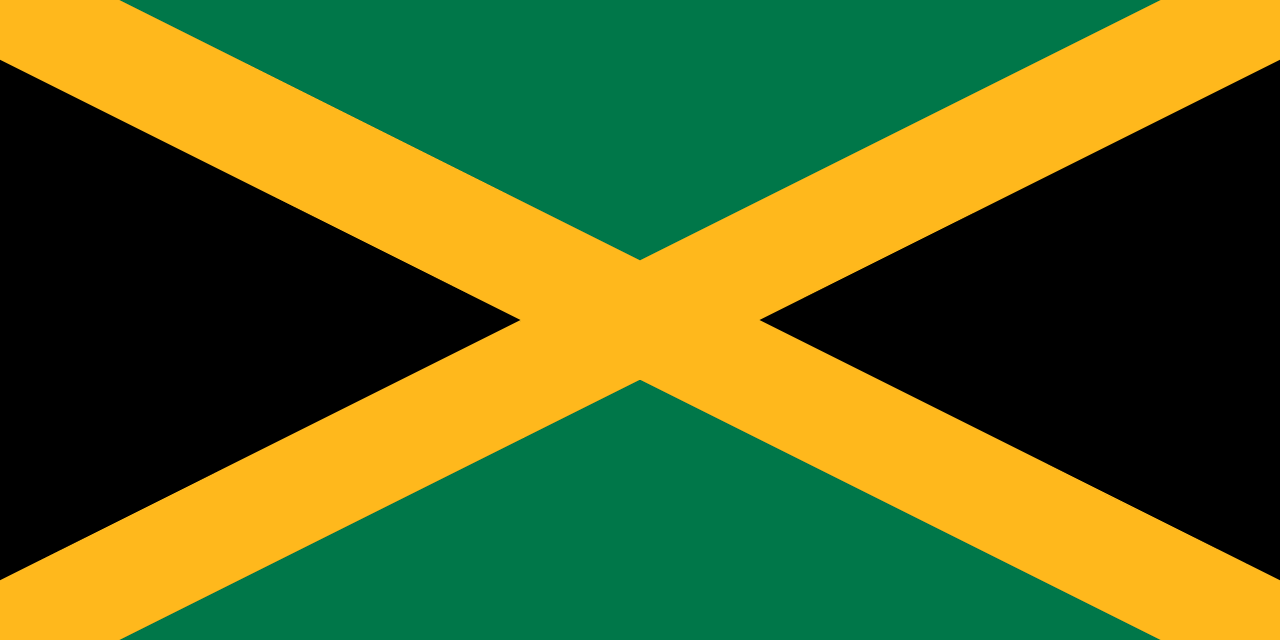
Jamaica
North America
A diagonal cross pattern dividing the flag into four triangles, with green triangles at top and bottom, black triangles at hoist and fly, and yellow diagonal cross, symbolizing the natural beauty, strength of the people, and golden sunshine of Jamaica.
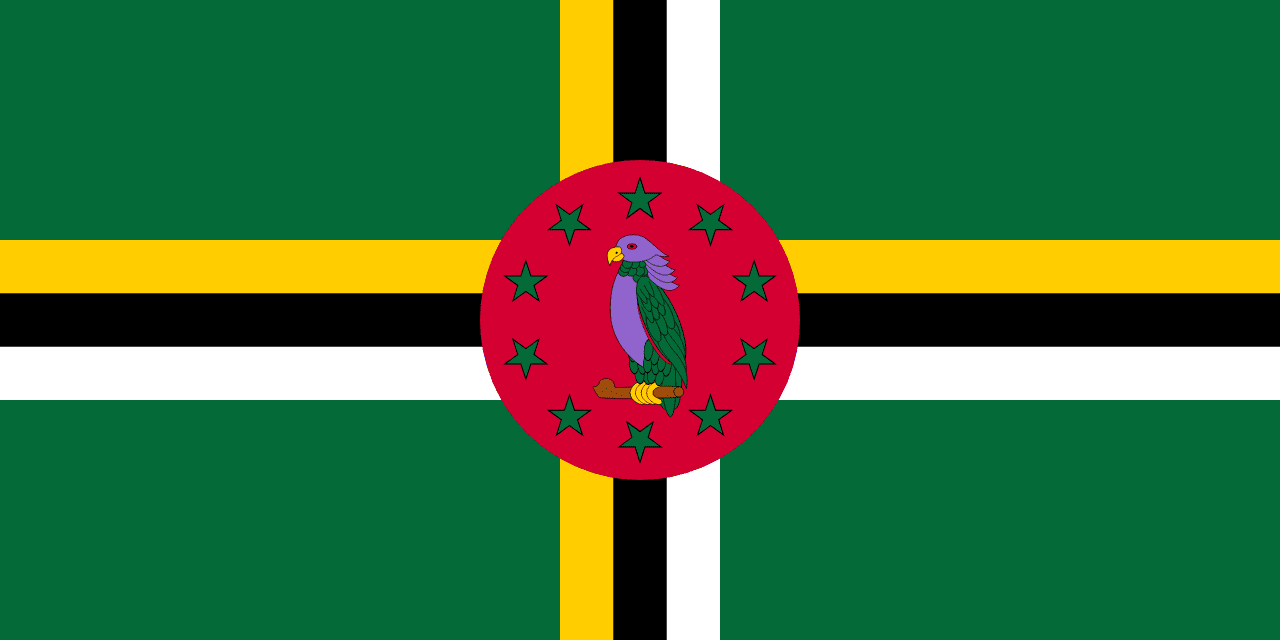
Dominica
North America
A green field with a cross pattern of yellow, black, and white stripes and a red circle in the center containing the Sisserou parrot, representing the lush vegetation, the Trinity, racial harmony, and the unique wildlife of the 'Nature Island of the Caribbean.'
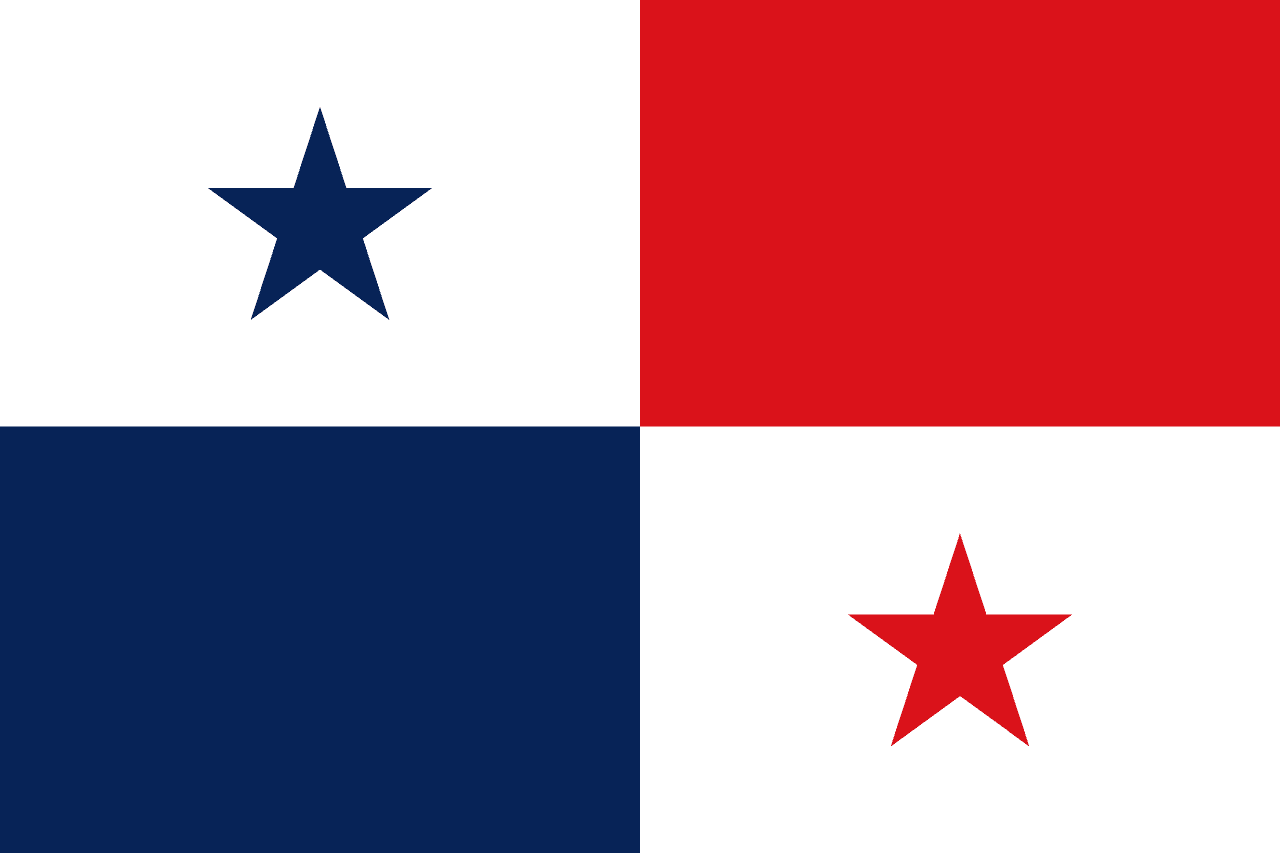
Panama
North America
Quartered flag with white and blue star in top left, red in top right, blue in bottom left, and white with red star in bottom right. The design symbolizes political balance and the ideals of peace and progress.
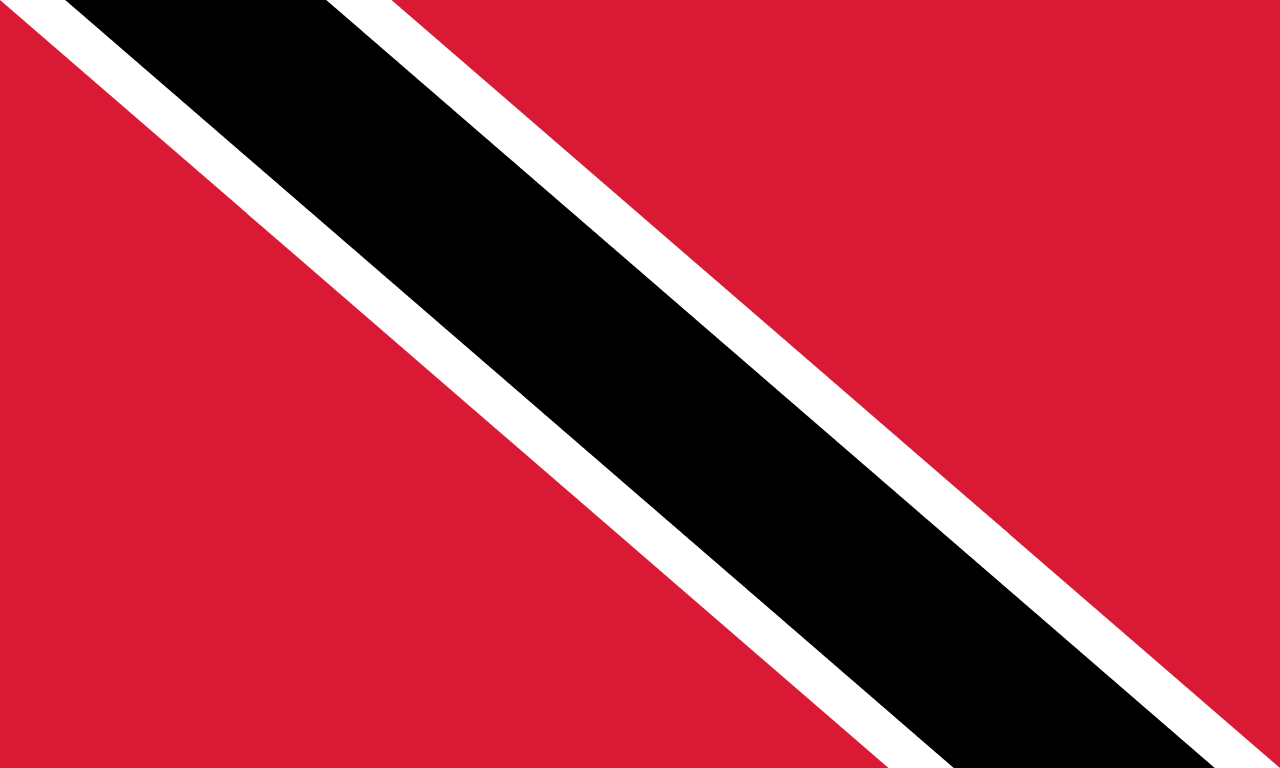
Trinidad and Tobago
North America
A red field with a black diagonal stripe bordered by thin white stripes running from the upper hoist to the lower fly, representing the vitality of the land and people, the sea surrounding the islands, and the wealth and strength of the nation, designed by local artist Carlisle Chang.
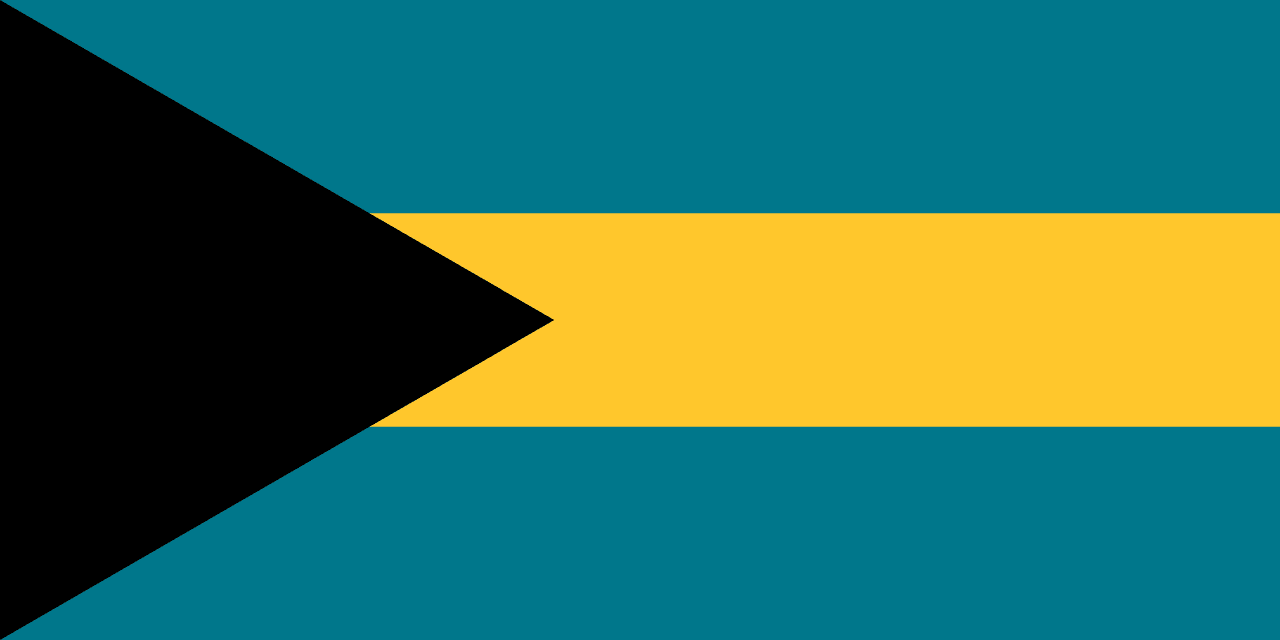
Bahamas
North America
Three horizontal stripes of aquamarine, gold, and aquamarine with a black equilateral triangle at the hoist, representing the waters surrounding the islands, the golden beaches and sunshine, and the strength and determination of the Bahamian people united in their love for their homeland.

Grenada
North America
A red border surrounding yellow and green triangular sections with seven gold stars and a nutmeg symbol, representing the warmth of the people, sunshine and agriculture, vegetation and youth, and Grenada's fame as the 'Spice Island.'